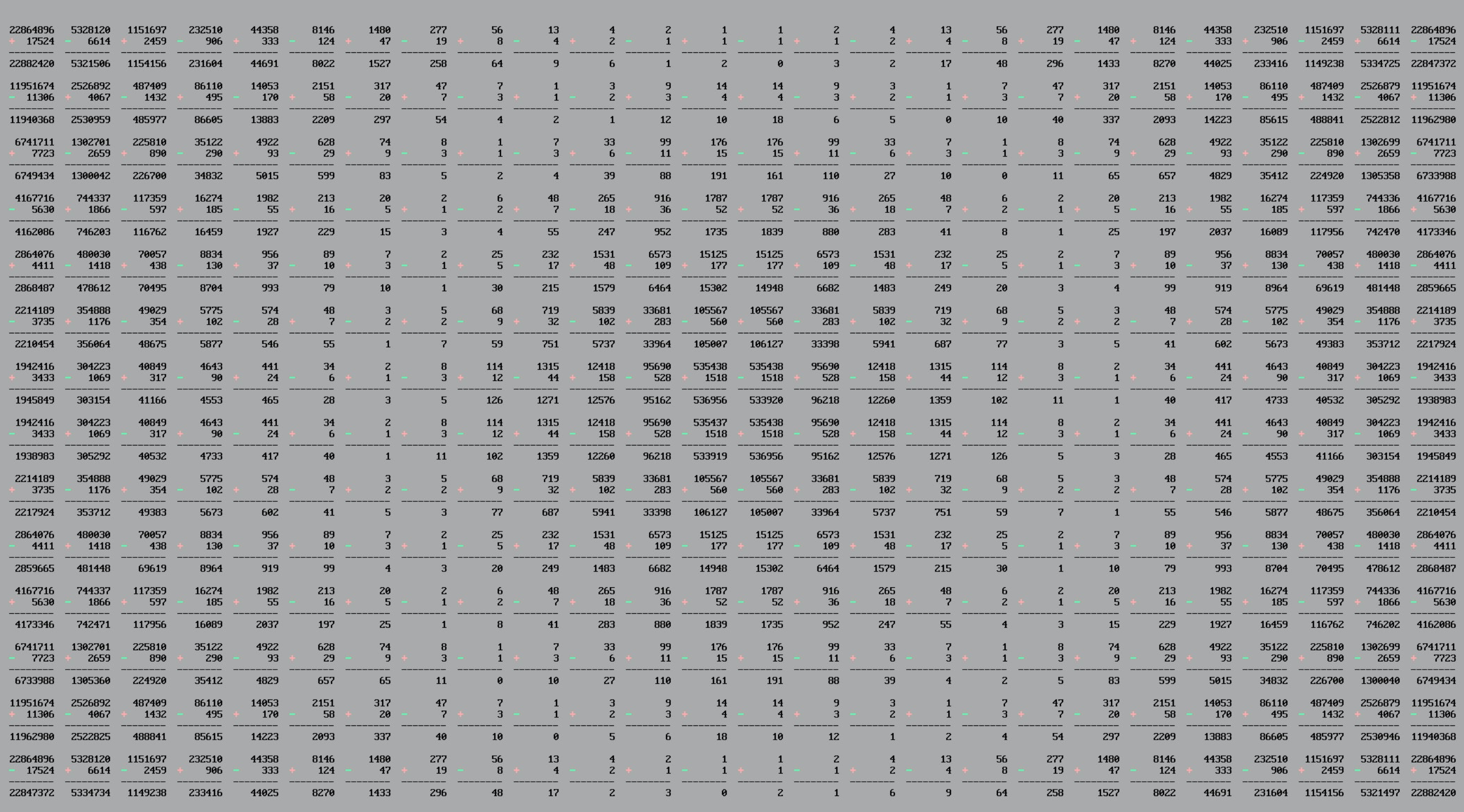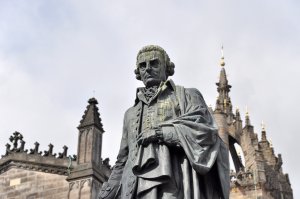Getting the whole spectrum of governments, academia and civil society to track “natural capital” would help create shared efforts toward solving shared problems like the climate crisis.
GEORGE TOWN, Malaysia — Modern science arose by breaking down complex problems into their parts. As Alvin Toffler, an American writer and futurist, wrote in his 1984 foreword to the chemist Ilya Prigogine’s classic book “Order out of Chaos”: “One of the most highly developed skills in contemporary Western civilization is dissection: the split-up of problems into their smallest possible components. We are good at it. So good, we often forget to put the pieces back together again.”
Specialization produces efficiency in production and output. But one unfortunate result is that silos produce a partial perspective from specialist knowledge; very few take a system-wide view on how the parts are related to the whole. When the parts do not fit or work together, the system may break down. As behavioral economist Daniel Kahnemann put it: “We can be blind to the obvious, and we are also blind to our blindness.”
Silos make group collective action more difficult; nation-states, tribes, communities and groups have different ways of knowing and different repositories of knowledge. A new collective mental map is needed, one that moves away from classical Newtonian science, with its linear and mechanical worldview, toward a systems-view of life. The ecologists Fritjof Capra and Pier Luigi Luisi argue that “the major problems of our time — energy, the environment, climate change, food security, financial security — cannot be understood in isolation. They are systemic problems, which means that they are all interconnected and interdependent.”
“Siloed thinking created many of our problems with inequality, injustice and planetary damage.”
A complex, non-linear, systemic view of life sees the whole as a constant interaction between the small and the large: diverse parts that are cooperating and competing at the same time. This organic view of life coincides with the ancient perspective found in numerous cultures — including Chinese, Indian, native Australian and Amerindian — that man and nature are one.
In short, modern Western science has begun to return to the pre-Enlightenment worldview that saw man, God and Earth in somewhat mystic entanglement. The late Chinese scientist Qian Xuesen argued the world was made up of “open giant complex systems” operating within larger open giant complex systems. Human beings themselves are open giant complex systems — every brain has billions of neurons connected to each other through trillions of pathways — continually exchanging and processing information with other humans and the environment. Life is much more complex, dynamic and uncertain than we once assumed.
To describe this dynamic, complex and uncertain systemic whole, we need to evolve trans-disciplinary thinking that integrates the natural, social, biological sciences and arts by transcending disciplinary boundaries. Qian concluded that the only way to describe such systemic complexity and uncertainty is to integrate quantitative with qualitative narratives, exactly what the Nobel Laureate Robert Shiller advocates for in “Narrative Economics.”
Living Nature
The idea of the Earth (Gaia) as a living whole that has a delicate balance between biology and the physical environment has long resonated with some ecologists and those close to nature. Recent progress in biological, neural, ecological and information sciences has established the Earth as alive. Humanity has abused the living Earth, and at a basic level, nature is responding. The German historian Philipp Blom, for example, called the 17th-century mini Ice Age “nature’s mutiny,” as if nature can exercise revenge against abuses by humans.
Unfortunately, politicians and economists committed to growth in the short term view nature in a different light. When the 1972 Club of Rome report “The Limits of Growth” was published, political economists mostly ignored it — they saw nature as an inanimate resource to be exploited in order to build wealth.
Since at least World War II, the benchmark measure of economic growth has been gross domestic product (GDP), a flow concept directed toward adding value for human life on the planet without taking into consideration the value destruction of irreplaceable natural capital through resource depletion, biodiversity loss, pollution and other costs that impact human health and well-being.
As the Cambridge economist Partha Dasgupta lamented in a recent report on biodiversity, “Global climate change attracts attention among intellectuals and the reading public not only because it is a grave problem, but perhaps also because it is possible to imagine meeting it by using the familiar economics of commodity taxation, regulation and resource pricing without having to forego growth in material living standards in rich countries. The literature on the economics of climate change has even encouraged the thought that, with only little investment in clean energy sources over the next few years (say 2% of GDP), we can enjoy indefinite growth in the world’s output of final goods and services (global GDP).”
This focus on “produced capital” was, until recently, blind to “natural capital,” meaning that biodiversity and non-renewable natural resources like air, water, forests, seas and space that are essential to human well-being were being destroyed at an unprecedented rate, threatening the well-being of humanity as a whole.
One Earth
What we need is a “One-Earth Balance Sheet” to describe the true and fair accounting for Earth that covers not just the flows and stock of everything, but also natural capital and biodiversity. We do not yet have much of the necessary information to create such a balance sheet, but if we can collectively build it up from all the economic, financial, environmental, social and governance information that is increasingly available, we would slowly construct a new map as the basis for discussing shared goals, challenges and solutions.
That was what happened during the Renaissance. European cartographers, navigators, merchants, bankers and scientists drew upon printed maps and knowledge gathered from Arab and Asian sources to slowly improve their maps and technology. There was no top-down design, but rather a collective intellectual and culture “becoming.” New maps led to the discovery of the Americas and new paths to globalization.
To map our collective impact on Earth and each other, we need to show how siloed thinking created many of our problems with inequality, injustice and planetary damage. The One-Earth Balance Sheet may help to unveil our blind spots and imbalances. Life is not about partial perspectives of false binaries between good and evil, man and planet, but in recognizing that the many are one.
The most basic flaw in economic accounting is statistical stock-flow inconsistency. The United Nations System of National Accounting (SNA) was devised in 1953 to create accounting at the national level through the measurement of flows, such as income, expenditure, imports and exports. Such data is extracted from basic corporate, household, government and financial accounts, each with their accounting and valuation flaws. The SNA has been updated and revised over the years, but it still lacks data, and progress towards global accounting remains slow.
Delays in compiling national balance sheets mean that policymakers are often blind to stock imbalances. For example, in the 2008 global financial crisis, bank regulators were shocked to find undisclosed debt hidden in derivatives “below the line” or in off-balance, offshore vehicles. Environmentalists are furious that externalities (unmeasured pollution, environmental deterioration, inequalities) are not measured, resulting in bad policies and predatory business practices.
After the 2008 global financial crisis, the Stiglitz-Sen-Fitousi Commission identified the limits of GDP as an indicator of economic performance and social progress. It noted that the key defect of the GDP concept is under-measurement of externalities, natural resource depletion and biodiversity destruction. Indeed, non-market activities, such as the contribution of women to housework, are not measured at all. Specifically, the commission sought to shift the emphasis from measuring economic production to measuring people’s well-being.
Since 2008, the major economies, including most in G20, have constructed their national balance sheets in order to have a better understanding of the relationship between sectoral and international flows and stocks. The latest OECD report on natural capital and biodiversity found that out of 89 countries that implemented accounts consistent with the U.N. System of Environmental Economic Accounting, most are incomplete and only 34 have developed ecosystem accounts. Even today, the International Financial Reporting Standards have no separate disclosure standard on non-traditional indicators such as environmental, social and governance measures. As any data scientist will tell you: “garbage in, garbage out.” The quality of lofty quantitative economic models depends on data quality.
“If we consider Earth as a living being, we can easily amend the current accounting measurement frameworks to take into consideration human interactions with nature.”
Each sovereign country behaves today as if its monetary, fiscal or consumption policies operate in a silo, impacting its own citizens only. Since there is no global government or central bank, no one compiles a global monetary and fiscal accounting to see if what individual nations do is consistent with the Sustainable Development Goals for the planet as a whole. Citizens are not given a complete picture of what alternative policies are available that could help the planet as a whole.
But if we consider Earth as a living being, we can easily amend the current accounting measurement frameworks to take into consideration human interactions with nature. For example, suppose we create an extra “nature” sector for national and international economic accounting systems. We could keep records of how much it has “transacted” in terms of carbon emissions and capture, usage of natural resources, pollution and more.
There is much work to do to standardize concepts, frameworks and disclosure requirements. But the building blocks for the compilation of the One-Earth Balance Sheet, with the input of natural and social scientists and communities are broadly available and can be accelerated to create a common narrative on dealing with climate change and inclusivity.
Having a One-Earth perspective would allow more pluralistic debate over the costs and benefits of applying unilateral policies, such as carbon tariffs that shift the costs to exporting countries. If there is a shortage of funds to finance carbon-reducing investments, could these be funded by a globally agreed Tobin-tax on financial trading, which could cut short-term speculation for better resource allocation?
A One-Earth Balance Sheet would be able to identify where our largest imbalances are. Many are already obvious, such as social, income and wealth. But others, such as consumption behavior relating to pollution, carbon emissions and choke points (vulnerable links) in global networks and supply chains, have not yet been mapped adequately.
The pandemic has shown how we need whole-of-government and whole-of-society approaches to deal with our collective challenges. The lack of good data at the national and global level has led to incomplete and flawed policies, as well as misunderstandings that led to conflict.
The task of compiling a One-Earth Balance Sheet is beyond any single individual or group, as the data would be multidimensional and multidisciplinary. Concerned individuals and multilateral agencies should convene a global commission to give urgency and political support for this task — not from a national perspective, but rather a planetary one. All of us and the planet are impacted by existing individual, national, regional or geopolitical behavior. Getting the whole spectrum of academia, civil society and national and multilateral agencies to contribute to data collection to build the One-Earth Balance Sheet would help create shared efforts for a common understanding of shared threats.
This article has been re-posted with permission from the website Noema





